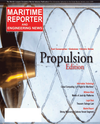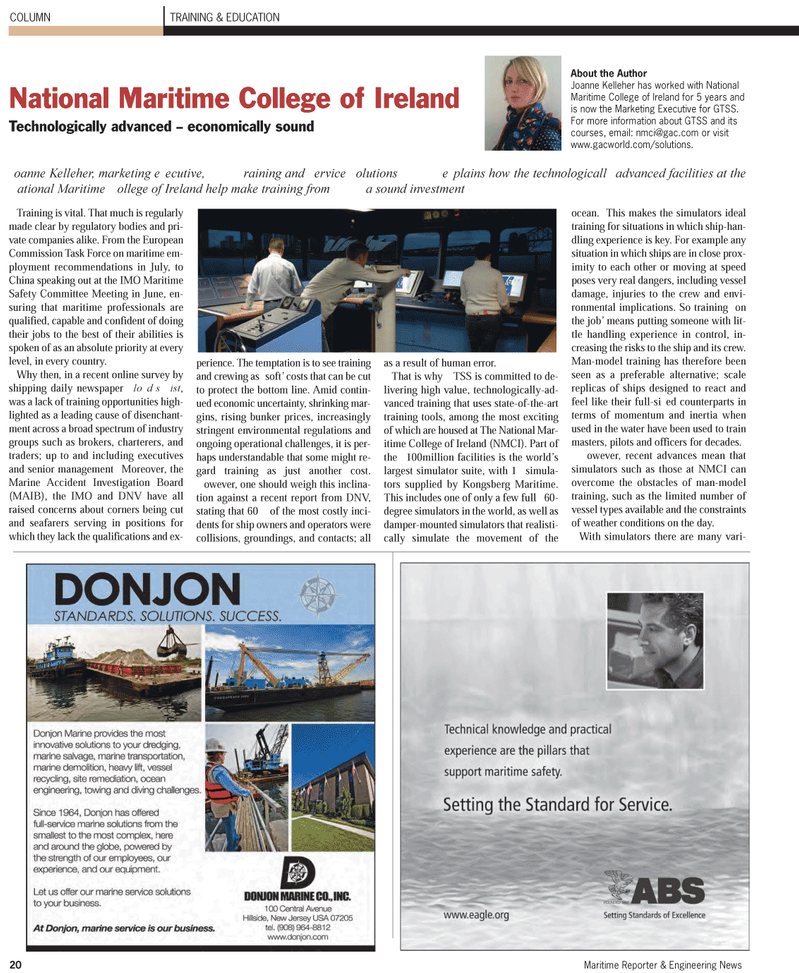
Page 20: of Maritime Reporter Magazine (September 2011)
Marine Propulsion Annual
Read this page in Pdf, Flash or Html5 edition of September 2011 Maritime Reporter Magazine
Training is vital. That much is regularly made clear by regulatory bodies and pri- vate companies alike. From the European Commission Task Force on maritime em- ployment recommendations in July, to China speaking out at the IMO MaritimeSafety Committee Meeting in June, en-suring that maritime professionals arequalified, capable and confident of doing their jobs to the best of their abilities isspoken of as an absolute priority at every level, in every country. Why then, in a recent online survey by shipping daily newspaper lods ist ,was a lack of training opportunities high- lighted as a leading cause of disenchant-ment across a broad spectrum of industrygroups such as brokers, charterers, and traders; up to and including executives and senior management Moreover, the Marine Accident Investigation Board (MAIB), the IMO and DNV have all raised concerns about corners being cutand seafarers serving in positions for which they lack the qualifications and ex- perience. The temptation is to see training and crewing as soft? costs that can be cut to protect the bottom line. Amid contin- ued economic uncertainty, shrinking mar- gins, rising bunker prices, increasingly stringent environmental regulations and ongoing operational challenges, it is per- haps understandable that some might re-gard training as just another cost.owever, one should weigh this inclina- tion against a recent report from DNV, stating that 60 of the most costly inci- dents for ship owners and operators were collisions, groundings, and contacts; allas a result of human error. That is why TSS is committed to de- livering high value, technologically-ad- vanced training that uses state-of-the-art training tools, among the most exciting of which are housed at The National Mar- itime College of Ireland (NMCI). Part of the 100million facilities is the world?s largest simulator suite, with 1 simula- tors supplied by Kongsberg Maritime. This includes one of only a few full 60- degree simulators in the world, as well as damper-mounted simulators that realisti- cally simulate the movement of the ocean. This makes the simulators ideal training for situations in which ship-han-dling experience is key. For example any situation in which ships are in close prox-imity to each other or moving at speed poses very real dangers, including vessel damage, injuries to the crew and envi- ronmental implications. So training on the job? means putting someone with lit- tle handling experience in control, in- creasing the risks to the ship and its crew. Man-model training has therefore beenseen as a preferable alternative; scale replicas of ships designed to react andfeel like their full-sied counterparts in terms of momentum and inertia whenused in the water have been used to train masters, pilots and officers for decades. owever, recent advances mean that simulators such as those at NMCI canovercome the obstacles of man-model training, such as the limited number ofvessel types available and the constraints of weather conditions on the day. With simulators there are many vari- TRAINING & EDUCATION COLUMN20Maritime Reporter & Engineering News National Maritime College of Ireland Technologically advanced ? economically sound About the AuthorJoanne Kelleher has worked with NationalMaritime College of Ireland for 5 years and is now the Marketing Executive for GTSS.For more information about GTSS and its courses, email: [email protected] or visitwww.gacworld.com/solutions. oanne Kelleher, marketing eecutive, raining and ervice olutions eplains how the technologicall advanced facilities at the ational Maritime ollege of Ireland help make training from a sound investment

 19
19

 21
21
